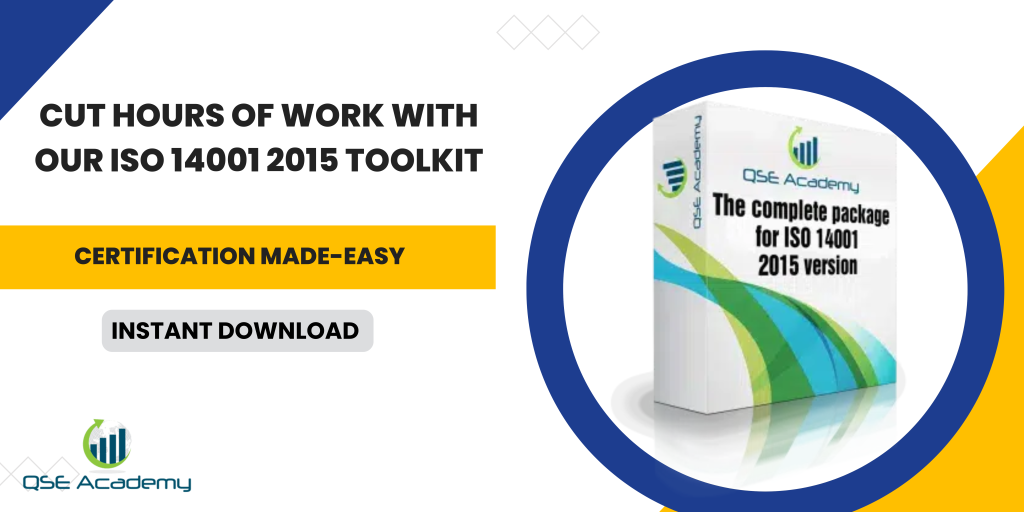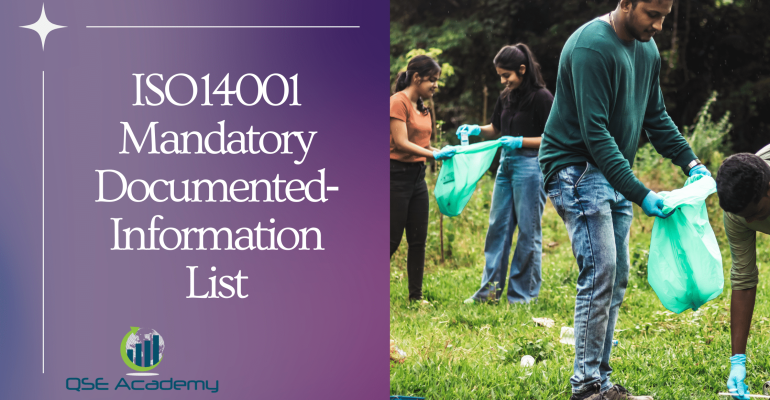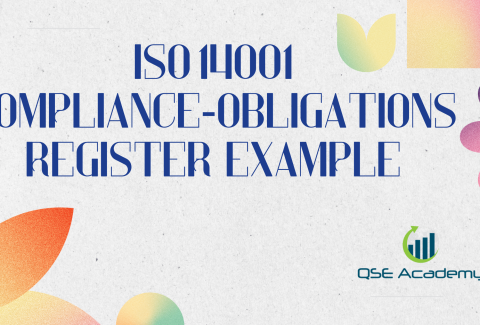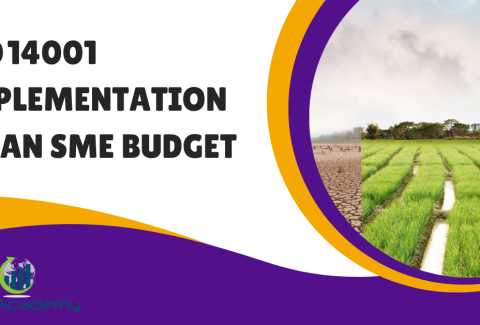ISO 14001 Mandatory Documented‑Information List
Last Updated on November 24, 2025 by Melissa Lazaro
Why Documentation Matters in ISO 14001
When I first started helping companies implement ISO 14001, one of the biggest frustrations I heard was:
“We don’t know what’s mandatory and what’s just ‘nice-to-have.’”
And honestly? I get it. ISO 14001 can feel vague. It tells you what must exist, but not always how it should look. Some companies end up creating hundreds of pages of unnecessary documents, while others miss key records and walk straight into nonconformities during the audit.
So in this article, I’ll break down exactly what ISO 14001 requires as documented information — clause by clause — so you know where to focus your time and effort. You’ll also get practical tips based on real audits, common mistakes to avoid, and how to make documentation simple, useful, and audit-ready.
By the time you finish, you’ll know:
- Which documents are mandatory under ISO 14001:2015
- How they connect to your Environmental Management System (EMS)
- How to keep documentation lean but fully compliant
- What auditors typically look for during certification
Let’s make ISO 14001 documentation not just a requirement — but a tool that actually supports your system.
Mandatory ISO 14001 Documentation — Clause-by-Clause Breakdown
Clause 4 — Context, Interested Parties & EMS Scope
This is usually the first area where organisations overthink documentation.
Here’s what ISO 14001 actually requires:
- EMS Scope
- Interested parties and their requirements (register or documented evidence)
- Evidence of understanding external and internal context
(Many organisations use a SWOT or PESTLE for this — not mandatory, but helpful.)
Pro Tip:
Make the scope short, clear, and specific. One of my clients originally wrote a three-page scope that confused the auditor. We simplified it into two sentences — and it passed with zero findings.
Common mistake:
Copying a generic scope from a template without customizing it to operations, risks, and locations. Auditors spot this quickly.
Clause 5 — Environmental Policy
You need a controlled, approved environmental policy. It must be:
- Documented
- Communicated
- Available to relevant stakeholders
- Displayed (physically or digitally)
I’ve seen companies print the policy, laminate it, and then never use it again. That defeats the purpose.
Better approach:
Use your policy to guide environmental objectives and daily decisions. A policy that lives only on the wall but not in practice usually leads to findings.
Clause 6 — Aspects, Risks, Objectives & Compliance Obligations
This clause tends to generate the most documentation — and for a good reason.
Mandatory documented information includes:
- Environmental aspects and impacts assessment
- Compliance obligations register
- Documented environmental objectives
- Plans for achieving objectives
A matrix format works really well here. It’s visual, logical, and audit-friendly.
Pitfall:
Objectives that sound nice but can’t be measured.
For example: “Reduce environmental impact.”
It sounds good, but auditors will ask: How? By when? Based on what data?
Clause 8 — Operational Controls & Emergency Preparedness
By this stage, the required documents tie directly to how your organisation works day to day.
You’ll need:
- Operational control procedures or documented control evidence
- Emergency preparedness and response procedures
- Records of emergency testing or drills
A real example:
A food manufacturer I supported avoided a major nonconformity because they had documented emergency spill procedures and could demonstrate staff training. The auditor tested employees verbally — and they knew what to do. That record saved them.
Tip:
If a procedure controls an environmental risk — document it.

This is where ISO 14001 shifts from planning to proving effectiveness.
Required documented information includes:
- Monitoring and measurement records
- Evaluation of compliance results
- Internal audit programme + audit findings
- Management review records
- Nonconformity and corrective action records
A lot of organisations wait until the audit to clean up this section — and it never goes well. Keep records updated consistently (monthly or quarterly depending on your operations).
Common mistake:
Thinking “records” just mean completed forms.
Auditors want evidence of effectiveness — trends, actions, follow-through.
Frequently Asked Questions
Q1: Do we need written procedures for everything in ISO 14001?
No — ISO focuses on documented information where necessary. Procedures are required only where controls depend on consistency, clarity, or legal compliance.
Q2: Can ISO 14001 documentation be digital?
Absolutely. Digital systems, SharePoint, cloud storage, and QMS software are all valid — as long as they’re controlled.
Q3: Is documentation the same as records?
Not exactly.
- Documents = instructions or information (policy, scope, procedures).
- Records = evidence something happened (training log, monitoring report, audit record).
Conclusion — Your Next Step Toward Compliance
The biggest lesson I’ve learned after years of guiding teams through ISO 14001 certification is this:
Documentation shouldn’t slow you down — it should support how you work.
Focus on what’s mandatory, make it understandable, and keep it aligned with your operations. A lean but accurate documentation system is far more effective than a massive binder no one uses.
If you want to move forward, here’s your next logical step:
Use this list to perform a quick internal gap-assessment of your current documentation.
It’ll show you what’s missing, what needs updating, and where your audit risks are.
Melissa Lavaro is a seasoned ISO consultant and an enthusiastic advocate for quality management standards. With a rich experience in conducting audits and providing consultancy services, Melissa specializes in helping organizations implement and adapt to ISO standards. Her passion for quality management is evident in her hands-on approach and deep understanding of the regulatory frameworks. Melissa’s expertise and energetic commitment make her a sought-after consultant, dedicated to elevating organizational compliance and performance through practical, insightful guidance.







